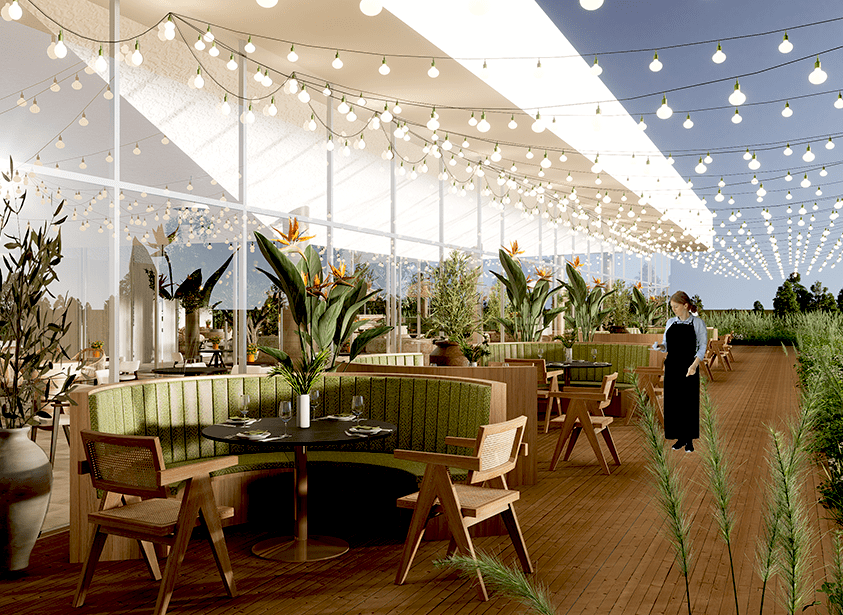What does an Interior Designer do?

One of the most sought after creative occupations for talented young people.
Find out what the Interior Designer does and how to become one.

A house but also the flagship store of a luxury brand, the offices of a company or the lounge of an airport. The environments that an interior designer creates are many and are not necessarily confined to the domestic setting. In fact, this professional deals with the design and development of interior spaces, be they public or private, residential or commercial.
Their work is, first and foremost, a design job. They start, therefore, by studying the needs of the client and the end user, which in some cases (e.g. a house) coincide. From there, they build the project, including all the details (the work to be done, the materials to be used, the furnishing and design objects) and, of course, the costs. Once the final approval has been given – a process that can be more or less lengthy depending on the complexity of the work and the client’s needs – the realisation follows step by step until completion.

An interior designer typically has a degree in architecture, specialising in interiors. In fact, this path allows them to combine hard skills (such as knowledge of construction techniques, home automation and lighting engineering) with a more purely artistic and creative know-how (e.g. history of architecture, art and design). The training is completed by an in-depth study of legislative issues, as legal aspects are fundamental both at the design stage and during the project execution, and of the principles of anthropometry (the science that studies the human dimension in relation to space and its functions).
The interior designer develops a deep and critical approach. He/she is an excellent researcher, analyst and communicator. He/she must be able to analyse the brief, understand the client’s needs and translate it into a strong interior design proposal based on deep research.
The interior designer stands at the center of a dense network of relationships. That is, they have to confront with various interlocutors: firstly the client, then the suppliers and the workers (carpenters, plumbers, electricians, etc.) who transform the project into reality. For this reason, they must have excellent listening and speaking skills: he must be able to grasp everybody’s needs (and difficulties) and be able to speak to each one in the right way, with the right language. It is also important that they have a good inclination towards constant updating. This will enable them to be familiar with the latest trends in aesthetics and to be at the forefront of technical developments (e.g. new materials, new technologies, etc.).
The interior designer has a professional knowledge of 2D and 3D software such as Adobe Suite, AutoCAD, SketchUp, Rhinoceros, 3dsMax, Blender, Revit, Lumion. These are computerised drawing programmes, which are used to design spaces and create renderings. In addition, other applications dedicated to specific types of environment, are used on a daily basis.
An interior designer is responsible for creating functional and aesthetically pleasing interiors by selecting and arranging furniture, colors, lighting, and materials. They work closely with clients to understand their needs and preferences, then develop design concepts, create detailed layouts, and oversee implementation. Interior designers also consider factors such as building codes, accessibility, and ergonomics to ensure that spaces meet safety and accessibility standards.
The interior designer can work as an employee in companies in the furniture industry (manufacturers or distributors of furniture, interior finishes or sanitary ware) or in professional design or architectural firms. In this case, the salary depends on two orders of factors: on the one hand, on their professional level (years of experience, level of autonomy, type of tasks performed), and on the other, on the characteristics of the business they work in (size, core business, location, etc.). Alternatively, they may opt for freelancing, aiming at developing their own portfolio of clients.
Domus Academy offers undergraduate & postgraduate courses in the field of interior design. Within our undergraduate offer, students can choose the Bachelor of Arts in Design (180 ECTS). This three- year undergraduate programme accreditated by the Italian Ministry of Universities and Research (MUR), is addressed to candidates who have at least 12 years of schooling. The course is articulated into core courses and electives, workshops and laboratories, and internship experiences, allowing students to effectively put their knowledge into practice. Based on a transdisciplinary approach and a learning methodology that includes lessons, workshops, labs, boot camps, critical thinking sessions, internships, a thesis workshop, and a final project, the programme aims to equip students across diverse specialisation tracks. Specifically, during the Interior Design & Urban Vision path, students learn how to design interior spaces that are coherent with an urban vision and vice versa, exploring and envisioning new forms of liveability
Among the postgraduate courses, the Master in Interior & Living Design is addressed to graduates and/or professionals in the field of interior design, product design, architecture, engineering, visual arts or other disciplines related to this field of study.
There are two types of Master in Interior & Living Design at Domus Academy. The Academic Master (60 ECTS credits) is developed over 5 modules, a curricular internship and a final project workshop and it allows to gain an Academic Master’s Degree accredited by the Ministry of University and Research (MUR), a qualification recognised in Europe and worldwide, as well as a Domus Academy Master Diploma. With the Dual Award Master (90 ECTS credits), students have the opportunity to integrate the course of study consisting of 5 modules, a curricular internship and final project workshop, with additional lessons and a more in-depth individual project thesis. With the Dual Award Master, students can obtain an Academic Master recognized by the MUR and, in addition, a Master of Arts officially recognized by the British system (Privy Council) and issued by Regent’s University London.
The Bachelor of Arts in Design offers a unique perspective on design, viewing it as a strategic act of shaping the world around us creating products, services, spaces, digital solutions and systems. In order to address the diverse interests and career aspirations of students, the course offers various specialised tracks within the programme, allowing students to build upon their knowledge and skills cohesively. In the Interior Design & Urban Vision path, students learn to design interior spaces that are coherent with an urban vision and vice versa, exploring and envisioning new forms of liveability.
The Master in Interior & Living Design at Domus Academy offers a multi-disciplinary setting with an approach that investigates new interior design scenarios and explores new ideas and opportunities for innovation. This programme allows for visionary responses to real world needs and aspirations facing our culture, our society and the environment today. The interior designer acquires a new mindset and masters a creative approach to innovation, involving emerging technologies and by looking at new perspectives. The interior designer has the chance to study in an environment with an innovative spirit originating from the leading Italian designers who founded Domus Academy, based on a learning by design approach, developing a disruptive and visionary philosophy, moving from the idea to the project, interpreting the present, exploring new possible futures.
The Bachelor of Arts in Design offers different specialised tracks. In the Interior Design & Urban Vision path, students learn to design interior spaces that are coherent with an urban vision and vice versa, exploring and envisioning new forms of liveability.
Domus Academy’s Master in Interior & Living Design includes theoretical courses in Design Culture, Design Formation, Personal Branding Portfolio and Professional Accelerator Activities. It also offers the workshops in Design of Spaces, Envisioning and an elective workshop in Advanced Design & Processes, Identity Design, Urban & Landscape Design, Architectural Design or Retail & Visual Merchandising.
The Bachelor of Arts programme in Design is based on a transdisciplinary approach. By integrating various disciplines and perspectives, it aims to equip students with the awareness and sensitivity needed to address multiple business, social, and environmental issues.
Domus Academy’s Master in Interior & Living Design studies the full potential of interior design projects, focusing on innovative and advanced solutions in collaboration with the design industry. In order to meet the design needs of the future, students learn to exercise critical thinking according to a methodology based on problem-setting and a cross-disciplinary approach. The multicultural and interdisciplinary experiences that students live during their Master enrich their professional background, allowing them to build a future professional network in Milan and in the international context.
Domus Academy’s Master’s Programme in Interior & Living Design trains a new professional figure capable of combining technical and design skills with strategic abilities: a profile aware of the bond that space creates in our minds, attentive to the processes and timing of project management, with opportunities for career paths in countless field (architectural studios, retail, hotel, exhibitions, events/lighting).





